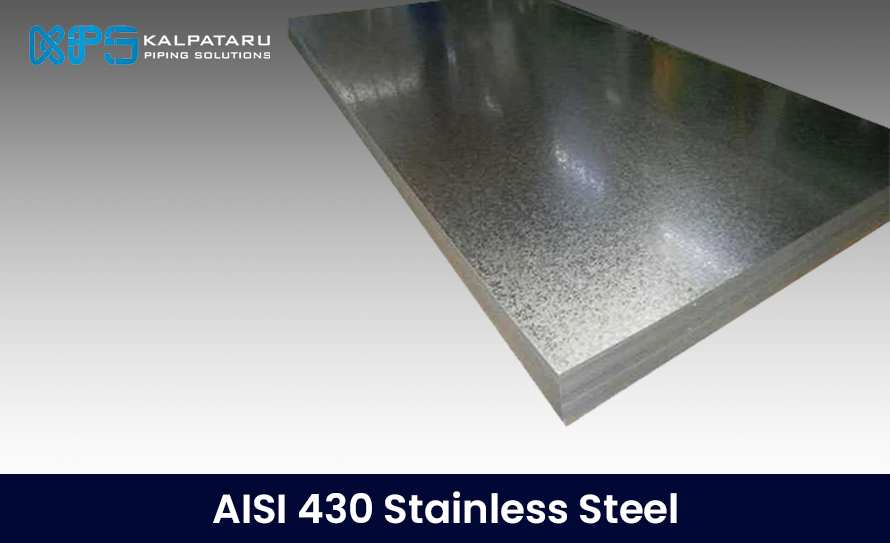All steel contains the element carbon, and mild steel is a type of carbon steel. When carbon is the main alloying element, the steel is classified as carbon steel. Typically, carbon steel contains about 0.05-1.7% carbon by weight. The carbon content determines if the steel is mild, medium, or high-carbon steel.
Carbon Steel vs. Mild Steel: Properties
|
Property |
Carbon Steel |
Mild Steel |
|
Carbon Content |
Higher (0.05% – 1.70%) |
Lower (0.05% – 0.25%) |
|
Strength |
Higher strength and hardness |
More malleable and ductile |
|
Brittleness |
More brittle |
Less brittle |
|
Heat Treatment |
Can be heat-treated |
Cold work needed for hardening |
|
Common Applications |
Construction, industrial manufacturing |
Automotive components, structural frames |
What Is Carbon Steel?
Carbon steel is an alloy primarily made of iron and carbon, containing between 0.05% and 1.70% carbon by weight. The carbon content significantly impacts the steel’s properties:
- Strength: Higher carbon content increases the strength of the steel.
- Ductility: Higher carbon content can make the steel more brittle and less ductile.
Finding the right balance of carbon content is essential for achieving the desired performance characteristics in various applications.
What Is Mild Steel?
Mild Steel is a type of carbon steel with low carbon content, making it the mildest form. It may also contain other elements like manganese, silicon, and trace amounts of phosphorus, which help protect the iron structure.
Mild Steel is popular for its strength, ductility, and affordability. It’s commonly used in wires, steel sheets, and building materials. It accounts for 85% of all steel products in the United States.
Carbon Steel vs. Mild Steel
Composition:
- Carbon Steel: Higher carbon content (0.05-1.70%).
- Mild Steel: Lower carbon content (0.05-0.25%).
Advantages:
- Carbon steel: More robust, less prone to rusting, ideal for applications requiring significant strength.
- Mild steel: More malleable and ductile, easier to form into different shapes.
Disadvantages:
- Carbon steel: Generally more expensive, harder to weld.
- Mild steel: Less strong and durable compared to carbon steel.
Properties of Carbon Steel and Mild Steel
Carbon Steel:
- Contains 0.05% to 1.70% carbon by weight.
- Stronger but more brittle.
- Can be heat-treated for improved properties.
- Used in knives, saw blades, gear wheels.
Mild Steel:
- Contains a low amount of carbon.
- More ductile and malleable.
- Often contains manganese and silicon.
- Used in construction and building materials.
Uses for Carbon Steel and Mild Steel
Carbon Steel is used in construction, industrial manufacturing, and automotive components due to its strength and durability. Mild Steel is used in automotive parts, structural frames, and manufacturing processes like forging, welding, and machining due to its flexibility and formability.
Summary
Carbon steel and mild steel each offer unique advantages tailored to specific applications:
Mild steel is highly malleable and resistant to cracking during shaping or bending, making it ideal for projects requiring flexibility and formability.
Carbon steel provides excellent strength and wear resistance, suitable for applications where durability and toughness are essential.
Understanding the differences between these two types of steel helps in making an informed decision about which one will best meet your project requirements.
FAQs
Is carbon steel better than mild steel?
Carbon steel is stronger than mild steel, with up to 20% more strength, making it ideal for high-strength or high-hardness applications. However, one of its significant disadvantages is its higher cost compared to mild steel.
Which is better, mild steel or carbon steel?
Carbon steel is generally better than mild steel for applications requiring higher strength and durability due to its higher carbon content. It’s more resistant to rust and wear, making it suitable for industrial, construction, automotive, and aerospace uses. However, it is more expensive than mild steel.
Which is expensive carbon steel or mild steel?
Carbon steels do generally cost more than mild steels due to their higher strength and additional alloying elements. Prices can vary, but typically range from $800 to $1,000 per ton, depending on factors such as the specific type of carbon steel and market conditions.




